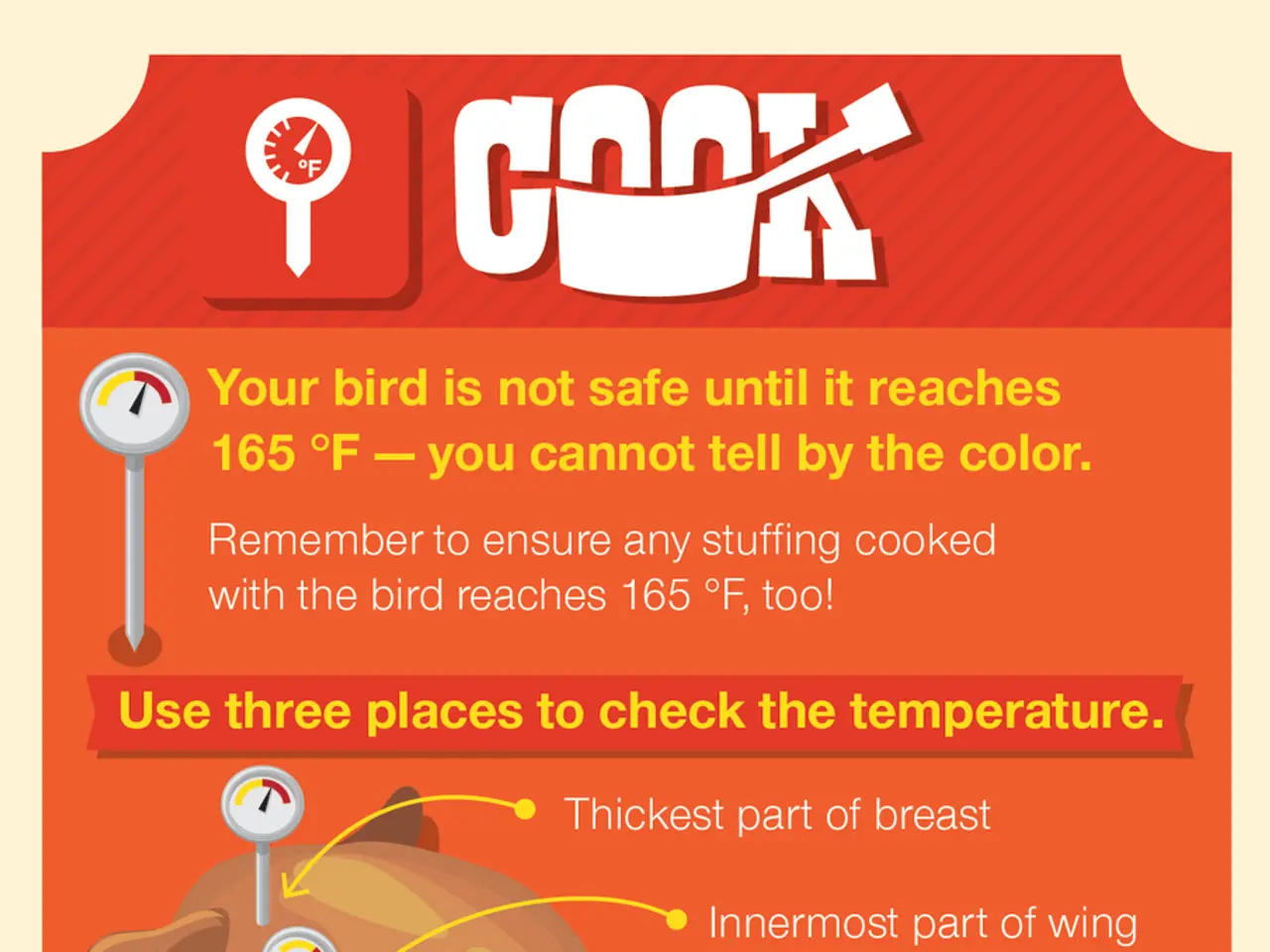A Comprehensive Guide to the Caloric and Gram Content of Rotisserie Chicken
Rotisserie chickens, a staple convenience food for many, come with a variety of nutritional profiles that can significantly differ between brands and preparation methods. Here's a closer look at the key factors influencing the nutritional content of these popular birds.
Sodium Content: A Key Differentiator
Sodium content is a significant factor in the nutritional disparity among rotisserie chickens. For instance, Costco's rotisserie chicken contains approximately 460 mg sodium per 3-ounce serving, while Walmart's version has 250 mg sodium, and Whole Foods' plain rotisserie chicken contains only 60 mg for the same portion size[1]. This stark contrast highlights the impact of seasoned or brand-specific recipes on sodium levels.
Type of Chicken Cut Affects Protein Content
The type of chicken cut also plays a role in the protein content. Chicken breast, known for its higher protein concentration, yields around 41g per serving, compared to thighs which offer approximately 25g at equivalent calories[2][4]. Most rotisserie chickens include both white and dark meat, so the protein content varies depending on what part is consumed.
Plain vs. Seasoned: A Matter of Added Nutrients
Seasoned rotisserie chickens often contain added sodium, sugars, or fats from marinades or spice rubs. For example, a lower sodium deli option like Oscar Mayer’s Lower Sodium Rotisserie Seasoned Chicken Breast contains 430 mg sodium, 9 g protein, and 1 g fat per 56 g serving[3]. This demonstrates that seasoning often brings additional sodium to the table.
Other Factors Influencing Nutritional Value
- Preparation style: Rotisserie cooking retains juices, but seasoning choices impact fat and sodium content.
- Chicken source: Chickens raised cage-free or with vegetarian feed may cater to different health concerns but have similar basic macronutrient profiles to conventional chickens[5].
It's worth noting that some stores inject brine (saltwater solution) into rotisserie chickens for added juiciness, which can increase sodium content. The skin of a rotisserie chicken adds about 50-80 extra calories per 100g.
A Balanced Approach to Rotisserie Chickens
A typical rotisserie chicken (without skin) contains approximately 165-170 calories per 100g, 31g protein, 3.6g fat, and 0g carbs. This makes it a popular choice for fitness enthusiasts, health-conscious eaters, and busy families.
For those watching their sodium intake, opting for organic or low-sodium options is advised. On the other hand, homemade rotisserie chickens offer the advantage of control over ingredients.
In conclusion, salt and seasoning largely drive the variability in rotisserie chicken nutrition between brands, with sodium ranging from very low (plain whole chickens) to quite high (some supermarket seasoned options). Consumers mindful of sodium or calories should check nutrition labels and consider plain or lower-sodium options when available.
[1] Whole Foods Nutrition Facts [2] USDA Nutrient Database for Standard Reference [3] Oscar Mayer Lower Sodium Rotisserie Seasoned Chicken Breast Nutrition Facts [4] USDA Nutrient Database for Standard Reference [5] Simple Truth Chicken Nutrition Facts
- Rotisserie chickens, often used in health-and-wellness and weight-management, come with a variety of nutritional profiles that can significantly differ between brands and preparation methods, such as the sodium content, which ranges from 60 mg at Whole Foods to 460 mg at Costco for the same portion size.
- Considering fitness-and-exercise and nutrition, a typical rotisserie chicken (without skin) contains approximately 165-170 calories per 100g, 31g protein, and 3.6g fat, making it a popular choice for fitness enthusiasts and health-conscious eaters.
- Lifestyle choices, like opting for organic or low-sodium rotisserie chicken options, can help those concerned about their sodium intake, as some stores inject brine into rotisserie chickens, increasing sodium content.
- In cooking, seasoned rotisserie chickens often contain added sodium, sugars, or fats from marinades or spice rubs, affecting their nutritional value.
- Alternatively, healthy-cooking at home gives more control over ingredients, leading to potential improvements in food-and-drink choices and a more balanced diet overall.




